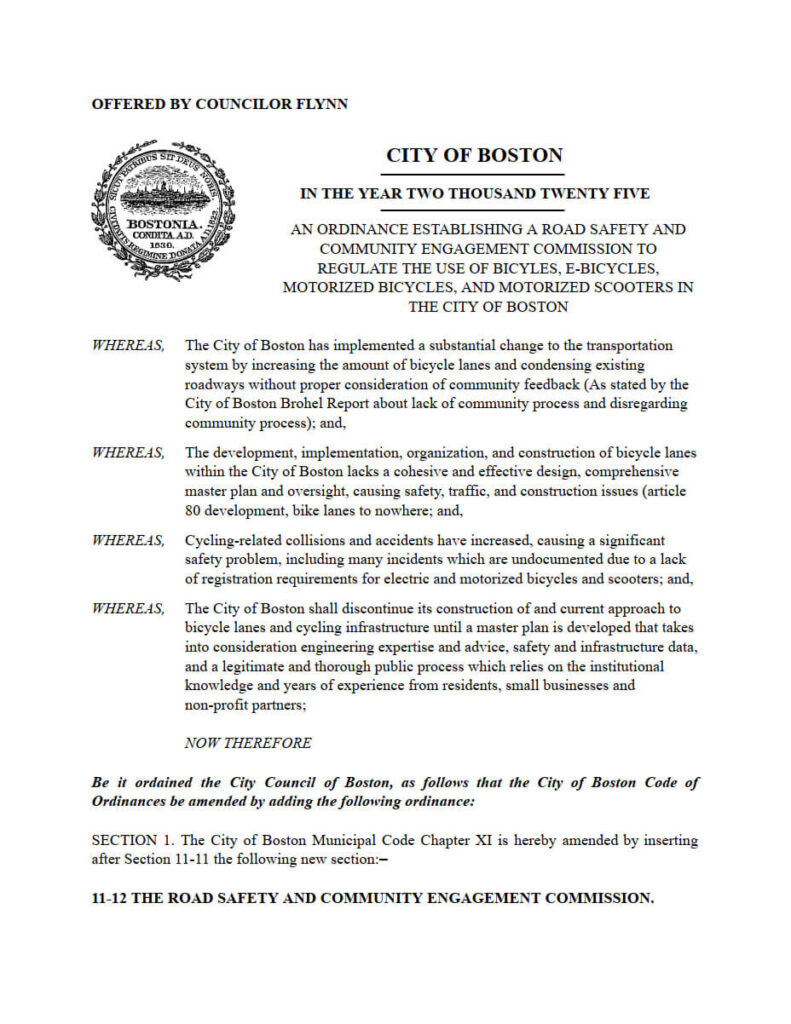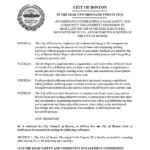A new ordinance filed today by Boston City Councilor Ed Flynn aims to overhaul how bike lanes and cycling infrastructure are designed and built in the city. The Ordinance Establishing a Road Safety and Community Engagement Commission would temporarily pause new bike lane construction while a comprehensive, data-driven master plan is developed to ensure safety, consistency, and meaningful community input.
“We need to do a better job of protecting everybody, whether it is a cyclist, pedestrian, driver, or someone taking their child to school,” Flynn said in an interview with Pedal Safe Boston. “This commission will ensure community voices are heard before projects move forward.”
The commission would include state transportation and public safety officials, two governor appointees, and a mayoral appointee from the Department of Neighborhood Services. An independent engineering firm would assist in gathering safety data, reviewing existing bike lanes, and creating a long-term master plan for an accessible and well-connected cycling network. Construction could resume once the plan is finalized and approved by the Mayor.
The bill also creates a formal structure to review future bike lane proposals. “When infrastructure is proposed, including bike lanes, the commission will look at it and make sure resident voices and neighborhood concerns are respected,” Flynn said.
At Pedal Safe Boston, we believe this proposal represents an important opportunity to correct flawed and unsafe designs and improve how bike infrastructure is planned citywide. We support the ordinance’s call for expert review, data-driven decision making, and meaningful public engagement. A better and safer bike network will benefit all Bostonians. Cyclists, pedestrians, drivers, and residents alike will see positive changes.
Beyond planning, the commission would be responsible for public engagement, setting safety standards, registering bicycles and scooters operating in Boston, and reviewing or modifying bike lanes to address safety concerns. The ordinance also gives the public a formal avenue to petition for changes to existing cycling infrastructure.
“It is about listening to each other, respecting each other, and working together to create safer streets for all,” Flynn added.
The complete ordinance is included below for those who wish to review it in detail.










